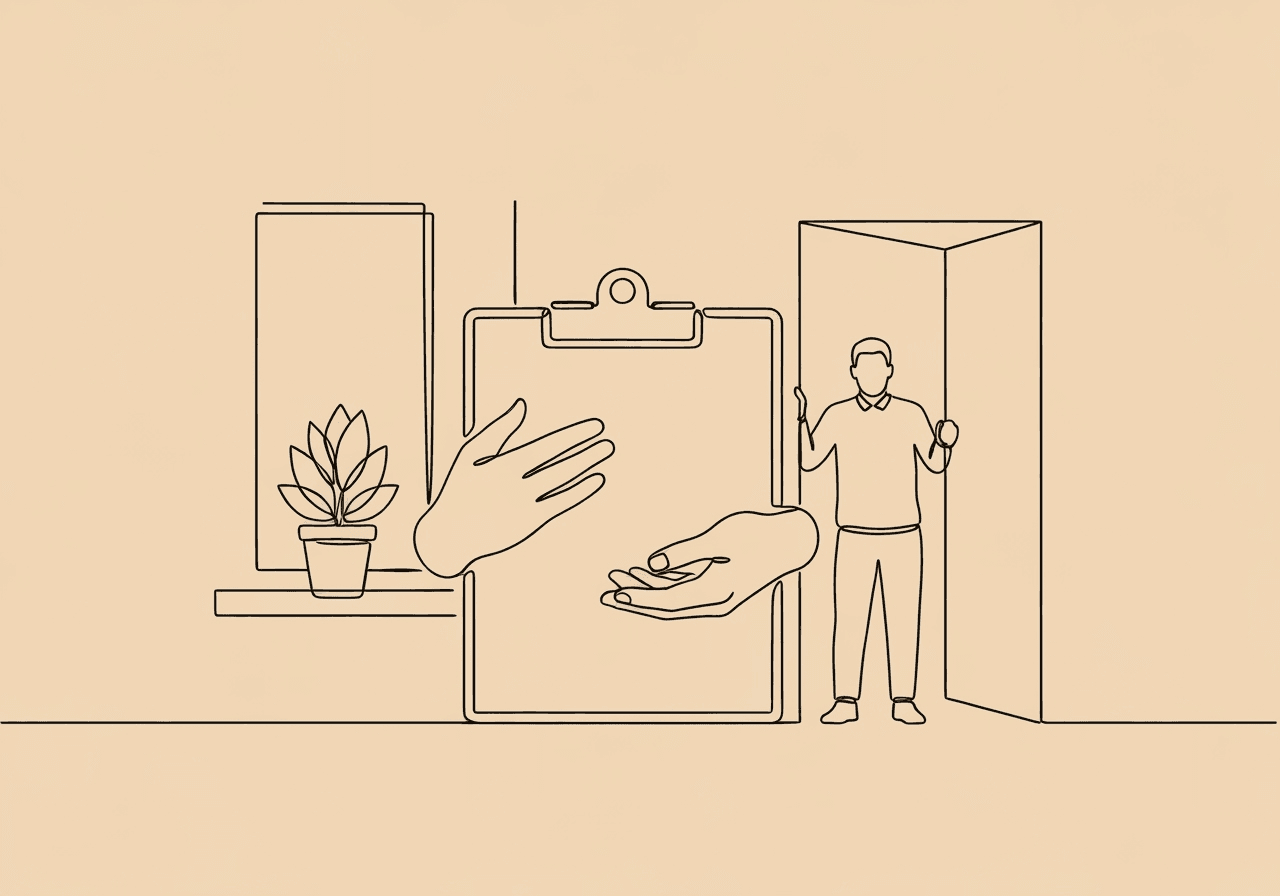BCBA Session Variation Documentation: Ethical Guide

In ABA therapy, curveballs like sudden client illnesses or setup glitches are part of the job. As a BCBA, strong BCBA session variation documentation keeps you compliant and ensures smooth care for clients. Skipping it can lead to audits, billing headaches, or shaky treatment plans, but solid records shield your practice and boost progress.
This guide pulls from BACB ethics and real-world tips to give you hands-on tools. You'll cover why variations matter, ethical rules, typical disruptions, update steps, ready templates, and ways to handle make-ups or cuts. At the end, you'll streamline your notes and stay pro-level.
Here are key takeaways to start:
- Document variations right away to protect treatment integrity and avoid compliance snags.
- Tie notes to BACB standards for ethical wins and payer approvals.
- Use templates like SOAP or DAP to capture impacts quickly and clearly.
- Always add clinical rationale to show client-centered adjustments.
- Review notes regularly to spot patterns and refine your approach.
Why Documenting Session Variations is Essential for BCBAs
Sessions seldom go exactly as scripted. That's why tracking changes through solid record-keeping protects clients and keeps you accountable. As outlined in the BACB's 2022 Ethics Code, behavior analysts need precise records of any shifts to build trust and guide decisions based on data.
Without good ABA unforeseen circumstances documentation, you might miss trends that shape behavior plans. Or worse, supervision checks could turn tricky. In my experience overseeing teams, BCBAs who nail this face way fewer hiccups.
It brings real perks too. One key benefit is maintaining treatment integrity. You can see how changes hit skill-building and tweak interventions on the fly. It also amps up client advocacy. Detailed notes prove your focus on personalized care when talking to families or insurers.
Plus, it offers legal and ethical cover. These records back you up in audits and cut risks from service hiccups. For more on basics, check our BCBA Ethical Documentation Best Practices.
Ethical and Compliance Requirements for Session Documentation
Ethics come first when noting variations. It keeps ABA services honest. The BACB Ethics Code's standard 3.09 stresses clear, prompt docs on services and tweaks from surprises. You must alert key folks and hold records for seven years to ease audits.
Payers pile on rules too. Take insurers like Blue Cross Blue Shield—they demand notes that prove medical need and spell out interruptions to dodge claim rejections Blue Cross Blue Shield behavioral health documentation for ABA. Messing up can spark ethics slips, like misstating services.
Core compliance bits? Stay objective. Stick to what you see, skipping personal spins to meet HIPAA. On timeliness, best practices call for finishing docs in 24 hours, though up to seven days works in a pinch ABA therapy documentation tips for better notes. And guard confidentiality. Share only with approved parties, per BACB's 2.08.
These steps make BCBA ethical session note changes a pro habit. They dodge traps like fuzzy wording that erodes credibility.
Common Unforeseen Circumstances and How to Document Them
Surprises hit sessions in familiar ways, from setting shifts to client quirks. Spotting them lets BCBAs log them fast, holding onto the session's worth. Say a home setup changes suddenly, like loud construction. It might tank focus, so note it to frame your data right.
Common cases? Environmental tweaks top the list. Log shifts like new spots or distractions. For example: "Moved to a calm room from street noise; client's focus dipped 20%." Caregiver pop-ins disrupt too. Jot the effect on attention, like "Parent stepped in for a quick call; held intervention 5 minutes, then restarted with cues."
Client health flares count big. Capture signs and fixes, such as "Kid mentioned headache; eased physical cues to talk-based work, hitting 70% of goals." Guidelines from the Council of Autism Service Providers suggest noting the event type, length, and goal hits to keep things rolling CASP guidelines on session note templates.
Link every entry to behavior shifts. That way, it shapes your next moves. For gap-handling ideas, see our BCBA Authorization Gap Documentation Guide.
Best Practices for BCBA Session Variation Documentation
Tweaking notes for changes needs a clear method to stay sharp. First, compare the plan to reality. Then weave in reasons that back your shifts. This evidence-based flow makes notes solid for checks.
Here's how to do it step by step. Right after the variation, size it up. Spot the cause, like a bug, and your quick fix, say trimming time. Next, pull in facts. Grab hard numbers on trials missed, plus caregiver views.
Then, spell out the why. For instance: "Shifted to avoid tiredness and keep things safe, matching the client's health." Slot it into the main note. Tie it to big-picture gains. Finally, double-check everything. Sign and date to lock in truth.
It fits BACB's clear-record push. In a D/A/P setup, the assessment part would unpack data trends from the twist. Praxis Notes' AI tools can speed this up. Just double-check for ethics fit.
Think of a real case I handled: A storm cut power mid-session. We noted the 15-minute pause, how it reset prompts, and no skill loss. That detail helped adjust weather buffers later.
Practical Templates for Documenting Session Variations
Templates make BCBA session variation documentation a breeze. They cut time yet cover all bases. Lean on ABA-friendly versions of SOAP or DAP.
Take this SOAP example for tweaks:
- Subjective: Family shared client's overnight cold; kid seemed wiped out.
- Objective: Cut 40-minute plan to 25; nailed 12 of 20 trials at 60% right.
- Assessment: Health surprise lowered energy; no backslide, but pace slowed.
- Plan: Book make-up soon; watch symptoms and tweak cues.
Or try DAP:
- Data: Call broke flow for 10 minutes; target behavior fell from 80% to 50%.
- Assessment: Surprise hit concentration; plan worked once back on track.
- Plan: Build in extra time ahead; chat caregiver role.
Heidi Health's ABA resources highlight measurable bits like these ABA session notes template from Heidi Health. Tailor them to your setup. To align with billing, review standard 97153 notes—focus on how variations tie to goals without gaps.
Expand these with your style. For a fatigue case, add: "Client yawned often; switched to seated activities, tracking eye contact drops." This keeps things detailed yet quick. In teams I've led, swapping templates weekly caught overlooked patterns, like recurring noise issues. It sharpened our whole process.
Ethical Documentation of Make-Up Sessions and Service Reductions
When surprises cause misses, log make-ups or cuts to avoid holes. BACB's 3.03 pushes planning for steady service. Note reductions only if data shows they're needed, like no gains over time.
On make-ups, alert folks fast. Slot them in policy windows, say 30 days. Log the first issue, new details, and results: "Make-up covered skipped goals; hit 90% marks." For cuts, give written reasons with proof of why it won't work. Get buy-in and map next steps.
Payers differ, but prove need in notes. BHCOE guidelines back this to limit breaks ethically BHCOE standards for ethical ABA practices.
Research ties tight docs to stronger fidelity and less chaos Treatment integrity in behavior analysis research. It pays off.
Frequently Asked Questions
How do I document unforeseen circumstances in my BCBA session notes?
Stick to facts on the event, session hit, and fixes. Add date, time, and reason—like "Illness cut time; stuck to easy tasks." BACB's 2022 code calls for this transparency to keep care flowing.
What are the specific requirements for documenting session variations under BACB Ethics Code 3.09?
It demands prompt, true service logs and change alerts to stakeholders. Split facts from views, and keep files seven years for checks.
How should BCBAs handle documentation for client illness during sessions?
Log signs, tweaks, and goal effects—like fewer trials. Team up with families on safety, honoring your duty to put welfare first.
What are best practices for documenting make-up sessions in ABA?
Cover the miss reason, reschedule info, and outcome compares. Wrap it in 24-72 hours for compliance and progress tracking.
How do payer mandates affect BCBA session variation documentation?
They want change proofs for clean billing, like need links. Loose notes invite denials; connect to goals via CASP-style tips.
What common mistakes should BCBAs avoid in ethical session note changes?
Skip opinions, waits, or reason gaps. Lean on data and forms for full coverage, dodging ethics flags or review woes.
BCBA session variation documentation goes beyond rules—it's key to ethical ABA that lifts clients and guards your rep. Blend BACB rules with these templates for full, flexible care stories.
Put it to work:
- Check templates against SOAP or DAP for tweak spots.
- Scan late notes for reason fills in surprises.
- Coach your crew on ethics tweaks for steady habits.
See BCBA session variation documentation as a skill flex. Your clients and setup win big. Dig more compliance at Praxis Notes.
(Word count: 1,652)
Popular in ABA Session Notes & Tools
- 1
RBT Supervision Documentation: 2025 BACB Guide & Templates
1,8149 min read - 2
Master ABA Medical Necessity Documentation: Avoid Denials
8629 min read - 3
Master ABA SOAP Notes: Guide for RBTs & BCBAs
7999 min read - 4
ABA Documentation Best Practices for RBTs: Essential Tips
7975 min read - 5
Guide to ABA Progress Reports for Insurance Reauthorization
6248 min read
Popular in ABA Session Notes & Tools
- 1
RBT Supervision Documentation: 2025 BACB Guide & Templates
1,8149 min read - 2
Master ABA Medical Necessity Documentation: Avoid Denials
8629 min read - 3
Master ABA SOAP Notes: Guide for RBTs & BCBAs
7999 min read - 4
ABA Documentation Best Practices for RBTs: Essential Tips
7975 min read - 5
Guide to ABA Progress Reports for Insurance Reauthorization
6248 min read
Related Resources
Explore more helpful content on similar topics

Essential 9 Steps for Standardized BCBA Note Templates
Learn 9 essential steps to create standardized BCBA note templates that enhance ABA EHR efficiency and ensure compliance. Streamline session documentation and link seamlessly to treatment goals—start today!

RBT Supervision Documentation: 2025 BACB Guide & Templates
Master RBT supervision documentation with the 2025 BACB guide. Learn compliance rules, 5% supervision requirements, telehealth best practices, and free templates for audits and quality care. Download now!

Master ABA Medical Necessity Documentation: Avoid Denials
Master ABA medical necessity documentation to create defensible treatment plans and reduce claim denials. Learn step-by-step guidelines for BCBAs, including payer criteria from Aetna, Optum, and Medicaid, baseline data, measurable goals, and intensity justification for effective ABA therapy.